|
|
 Jen Jen
|
 |
See Jen's reviews in Youth Yak. |
|
|
|
|
|
|
|
|
 Sally Sally
See another of Sally’s reviews in Youth Yak.
|
|
 |
 |
The Mighty Red
Louise Erdrich
The Mighty Red is the Red River of the North, which flows northward along the North Dakota Minnesota border to Lake Winnipeg. The Red River valley includes incredibly fertile farmlands and is prone to devastating floods. The fictional town of Argus North Dakota in the Red River Valley is the setting for Louise Erdrich’s newest book, The Mighty Red.
The book is set primarily during the financial crisis of 2008. Erdrich focuses on a number of ordinary people, connected in a variety of ways, and doing their best to deal with everyday life, as well as with a few extraordinary circumstances.
Kismet is a high school student who doesn’t fit in until Gary Geist, the son of a prosperous farm family, falls in love with her. Kismet’s mother Crystal, who is opposed to their relationship, drives a truck hauling sugar beets from the Geist farm. Kismet’s father is Martin, a failed actor who is a traveling arts teacher, who squanders his money on such things as expensive silk ties. When Kismet agrees to marry Gary, the other boy who loves her, Hugo, decides to get a job in the oil boom in North Dakota and earn enough money to steal Kismet from Gary. As if this weren’t complicated enough, there’s some sort of scandal around an accident Gary was as part of and Martin disappears with the money from the renovation fund of the Catholic church.
The intertwined stories of these folks and a number of others, play out against the backdrop of the farming crisis, the effects of the oil boom, the results of pesticides and other farming practices. Their lives, loves, and yearnings for the future are impacted by circumstances and powerful occurrences they can’t control.
The book is also filled with tenderness, hope, and Erdrich’s trademark humor.
This is a book you’ll want to savor. |
| |
|
|
|
The Grey Wolf
Louise Penny
I am a huge fan of the series of mysteries Louise Penny has written centering on Armand Gamache, head of homicide at the Sûreté. The latest installment is a strong addition to the series.
I recently had cataract surgery and couldn’t see well enough for several days to read. Libro.fm to the rescue! As an added bonus, Penny has a new reader for the series, Jean Brassard, a Quebequois. He’s a pleasure to listen to, and I finally learned how the names of characters and places in the book are pronounced! (Not that I can correctly pronounce them myself.)
The Grey Wolf starts on a beautiful day in the garden of the Gamache home in Three Pines. The calm is broken by Gamache’s violent response to a phone call from someone to whom he doesn’t wish to speak, and the story is off and running. A series of odd events occurs, followed, of course, by a murder. It’s a challenging case spanning two continents. Soon, Gamache and his second in command, Jean-Guy Beauvoir, and Inspector Isabelle LaCoste aren’t sure whom they can trust, other than each other. I don’t want to give any spoilers, so I won’t say more about the plot.
What I love about this series is the world Penny has created in Three Pines and the people who live there. For me, the mystery always is less interesting than the interactions of the familiar characters. However, The Grey Wolf delivers on both counts. Fans of the series won’t want to miss this one!

|
| |
|

|
|
Leaf, Cloud, Crow
Margaret Renkl
The Comfort of Crows by Margaret Renkl was one of my favorite books of 2023.
 A companion, Leaf, Cloud, Crow, was released in late September. The Comfort of Crows contains Renkl’s observations of her backyard over a year. Leaf, Cloud, Crow is a journal for you to record your observations over a year. It’s not just any journal, though. Week by week, there are writing prompts from Margaret, artwork by her brother, Billy Renkl, and plenty of room for your notes and sketches. It’s a wonderful companion, and I think the two together would be a fabulous gift for certain people, including yourself! A companion, Leaf, Cloud, Crow, was released in late September. The Comfort of Crows contains Renkl’s observations of her backyard over a year. Leaf, Cloud, Crow is a journal for you to record your observations over a year. It’s not just any journal, though. Week by week, there are writing prompts from Margaret, artwork by her brother, Billy Renkl, and plenty of room for your notes and sketches. It’s a wonderful companion, and I think the two together would be a fabulous gift for certain people, including yourself!
|
| |
|
|
|
|
|
| |
|
|
|
 Ann Ann |
|
See Ann's review in Youth Yak. |
|
|
| |
|
|
|
|
|
|
|
|
|
| |
|

Cascade
See another of Cascade’s reviews in Youth Yak.
|
|
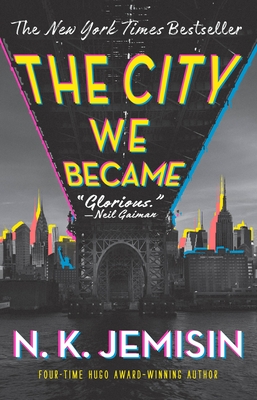 |
|
The City We Became
N.K. Jemisin
A Lovecraftian creature descends on New York City in an attempt to stop it from being "born." This is the crazy premise for a book and I found it to be endlessly fascinating. In this fantasy version of our world, large cities become living entities once they are established but the process of a city being born is a violent one for all the parallel universes surrounding it, causing one such universe to send beings to kill these burgeoning cities. Cities are encapsulated in human "avatars" and these chosen humans must fight off the terrors that try to destroy them. NYC's primary avatar is grievously wounded so the avatars of the five boroughs must come together to revive him and save the city. This is a wholly unique, character-driven sci-fi novel written by one of my favorite authors and I cannot wait to dig into the sequel. |
| |
|

|
|
|
|

Doni
|
|
 |
|
The Last Devil to Die
Richard Osman
The Last Devil to Die, newly out in paperback, is the most recent book in the Thursday Murder Club series. As usual, there are plots and counter plots, murders, drugs and antiquities, to name a few. But it is the relationship between Stephan and Elizabeth that makes this one my favorite of the series so far.
As usual, Osman starts us out with a murder. A friend of Stephan’s, it turns out, and the team activates. But for some reason, Elizabeth doesn’t seem as engaged, so we see Joyce step up to lead the investigation (not as daft as she appears).
The humanity in these books shines through, the humor, the love the group has for each other and the bittersweet of the end.
Word up is that Osman is taking a break from the Thursday Murder Club to work on his next series, We Solve Murders. In the meantime, check out Netflix; the cast is amazing. |
| |
|
 |
|
We Solve Murders
Richard Osman
We Solve Murders is the flagship in a new series by Richard Osman. Amy Wheeler is the adrenaline seeking heroine guarding a famous mystery author, Rosie, on a private island on South Carolina’s coast. Things heat up in a hurry when three Platinum clients of the private security company she works for are murdered, and she is always in the vicinity. Coincidence or is she being set up?
Things become more apparent when Amy is targeted, and she and Rosie set out to find out what’s going on. Although she has the skills to kill someone, she’s never actually solved a mystery. She calls on her widowed father-in-law Steve, a retired cop, to help. He’d rather stay home with his familiar routine; pub quizzes, talks on the bench with his deceased wife, and reading with his cat. But he does adore Amy, so he joins forces with her and Rosie to get to the bottom of this complicated tangle of intrigue and dead bodies before Amy is killed.
We get a peek at Amy’s husband Adam, whom neither Amy nor Steve have much to say to. But to say it is a unique marriage is an understatement. I look forward to learning more about him.
This is a funny, easy read with likeable characters. It will fill the gap that the Thursday Murder Club leaves quite nicely.

|
| |
|
|
|
|
|

Hannah
|
|
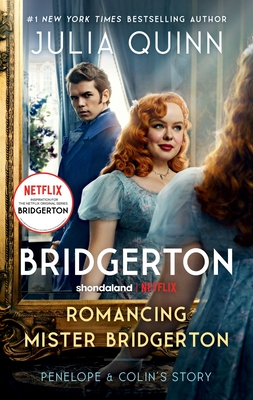 |
|
Bridgerton: Romancing Mister Bridgerton
Julia Quinn
Are romance novels your guilty pleasure?* Do you find them delicious but never tell anyone? Well, you can come out of the closet. The genre has now become mainstream. There are even bookstores that proudly identify as strictly carrying only the genre. And there’s the wildly popular Bridgerton series based on Quinn’s best-selling romance novels.
I picked up Romancing Mister Bridgerton out of curiosity. If you watched the series, this is the book about Penelope and Colin. It’s another case study about differences between films and the literature they’re based on. The characters in Romancing Mister Bridgerton are exactly the same (although the blind color casting in the Netflix version isn’t hinted at.) However, the plots are completely different! The same person is Lady Whistledown, but who learns about her identity, and when, are not. There are sexy scenes with one classic dialog retained but… there is not one mention of the Queen!
The book is not challenging, but I did enjoy it. Give a Quinn novel a try. If you think romance novels are beneath you, you might be pleasantly, if still guiltily, surprised.
*Movie critic Roger Ebert coined the phrase “guilty pleasures” to describe things that you know are not approved by cultured people, and you can’t logically defend them, but you just enjoy them anyway.
|
| |
|
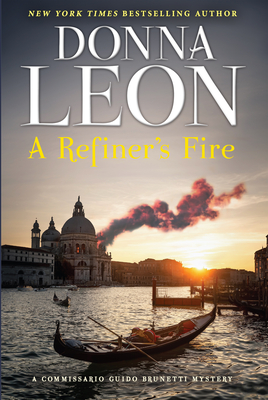
|
|
A Refiner’s Fire
Donna Leon
If you haven’t read any of Leon’s Commissario Guido Brunetti mysteries, do pick up this or any of the earlier books in her series. Her characters are wonderful (I keep wishing she and Louise Penny would co-author a book with their heroes working together), but I love even more the way she brings the reader into Venice. It’s not the Venice tourists see, but the incredible world of the local citizens. It’s fascinating.
I don’t understand the title “A Refiner’s Fire.” It sounds like there’s a fire in a refinery, but while there are two important fires in the book, they are unrelated to refineries. The theme this time is adolescents (including “baby gangs”) and the glory of heroism, earned or not. |
| |
|
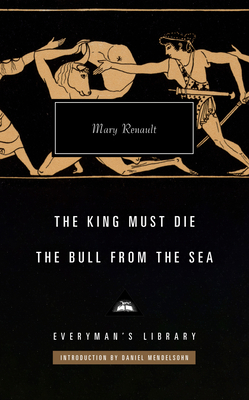 |
|
The King Must Die
Mary Renault
Novelized versions of the classics seem to be thriving (see my review of Troy in Youth Yak). Perhaps it’s because these stories speak to such basic human characteristics. Or perhaps it’s because they are universal, at least to Western audiences.
Renault has been writing these since she began to travel in Greece after WWII, and I think hers are among the best. The King Must Die is about Theseus, best known for fighting the Minotaur, a man with a bull’s head, and for finding his way out of the labyrinth by leaving a string trail. Theseus was a real king, although probably not actually a son of Poseidon. His tale was considered apocryphal until evidence was found that there actually were “bull dancers” who did the dangerous acrobatics. Renault has novelized the legend of Theseus and the Minotaur, whose image also exists in ancient sites, finding fanciful but plausible explanations of the events.
|
|
| |
 |
  |
 |
|
|

Lee
|
 |
 |
 |
Playground
Richard Powers
This is a stunningly grand novel.
The four main characters are Evie Beaulieu, a biological oceanography; Rafi Young, a Black who falls in love with literature; Todd Keane, a computer genius and AI creator; and Ina Aroita, an artist from the Pacific.
Rafi, Todd, and Ina come together as students in Chicago. Decades later, Evie, Rafi, and Ina come together on atoll in French Polynesia that was previously ravaged by phosphate mining.
The novel begins as a 12-year-old Evie tests the first Aqualung, and it concludes in the near future. It deals with the wonders of the ocean, with friendship and its loss, warnings of environmental damage, and cautions about AI.
This book is great! And the ending will provide awesome fodder for book group discussions. |
| |
|
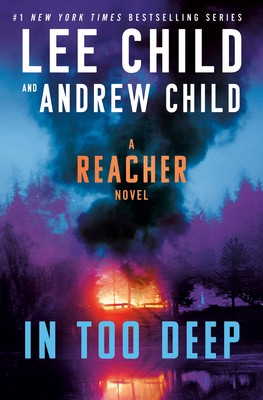 |
|
In Too Deep (Jack Reacher Book 29)
Lee Child and Andrew Child
Of course I am a Jack Reacher fan! And the latest is quite excellent.
Reacher has been in an auto accident. He regains consciousness, gradually realizing that his wrist is broken and that he is handcuffed to a metal table. His captor mistakenly believes that he has the situation well in hand.
Unlike many of the Reacher novels, this story involves only one character from a previous novel, FBI Special Agent Wallwork. Even so, there is no doubt it is a wonderful extension of the series.
Note: This book will be released October 22.
|
| |
|
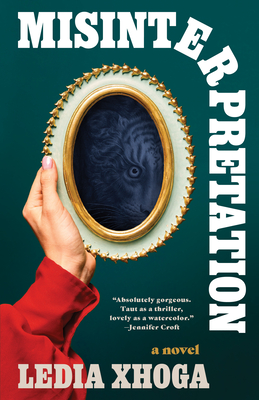
|
|
Misinterpretation
Ledia Xhoga
This is a debut novel by Ledia Xhoga (pronounced Joga) who was born and raised in Albania. The main character is an Albania interpreter who does work translating product manuals and also works with refugees and immigrants.
The is an undercurrent of threat and violence, but the interpreter continues onward. She is always hoping to be helpful but some of her actions and commitments seem misguided. She has a good friend who seems to be attached to the narrator more from habit and convenience than true friendship. And I am inclined to believe that her relationship with her husband Billy may be similar.
It is difficult to choose a category for this novel. It is not driven by plot or character. The focus, perhaps, is on people whose lives have been upended in some way, and they are trying to find some way of dealing with this and moving forward. The reader is going to be left unhappy if they want any of these narratives to be resolved. Yet, here I am, recommending that you read this book. |
|
|
|
|

Tim
|
|
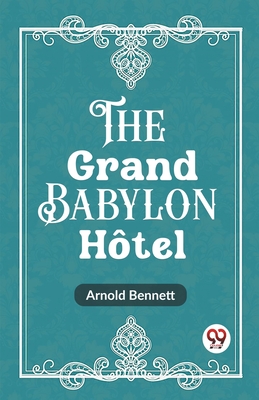 |
|
The Grand Babylon Hotel
Arnold Bennett
If one wishes to see the progress society has made, one of the best windows from which to view the parade of change is by reading the popular fiction of a previous period of time. Arnold Bennett’s, The Grand Babylon Hotel, published in 1902, is an excellent example. It's an old-fashioned pot boiler of popular fiction that exhibits the accepted truisms (sometimes prejudices) of its time. The modern reader may wince at what passes as accepted "fact" in the story.... say: reverence for monarchy and its social standing, unquestioned fascination with the power of money, subjugation of women, rampant racism, and unbridled colonialism. None (or few) of these attitudes would meet with the modern reader's approval, and by reading only modern fiction, we're in essence missing the changes we might otherwise see. This story was written 122 years ago, and in it we bump up against a whole series of assumptions we no longer believe to be true. The contrast between then and now, feels immense and is the perfect antidote to one of today's accepted truisms, that being, 'nothing ever changes'. It's just not true! Things do change, and we're the better for it. |
|
|
|
|
|
|
Would you like to be a guest reviewer?
Email Sally at sally@beagleandwolf.com. |
| |
|
|
|
|
|
— page top —
|
|






 Ann
Ann










 A companion, Leaf, Cloud, Crow, was released in late September. The Comfort of Crows contains Renkl’s observations of her backyard over a year. Leaf, Cloud, Crow is a journal for you to record your observations over a year. It’s not just any journal, though. Week by week, there are writing prompts from Margaret, artwork by her brother, Billy Renkl, and plenty of room for your notes and sketches. It’s a wonderful companion, and I think the two together would be a fabulous gift for certain people, including yourself!
A companion, Leaf, Cloud, Crow, was released in late September. The Comfort of Crows contains Renkl’s observations of her backyard over a year. Leaf, Cloud, Crow is a journal for you to record your observations over a year. It’s not just any journal, though. Week by week, there are writing prompts from Margaret, artwork by her brother, Billy Renkl, and plenty of room for your notes and sketches. It’s a wonderful companion, and I think the two together would be a fabulous gift for certain people, including yourself!




